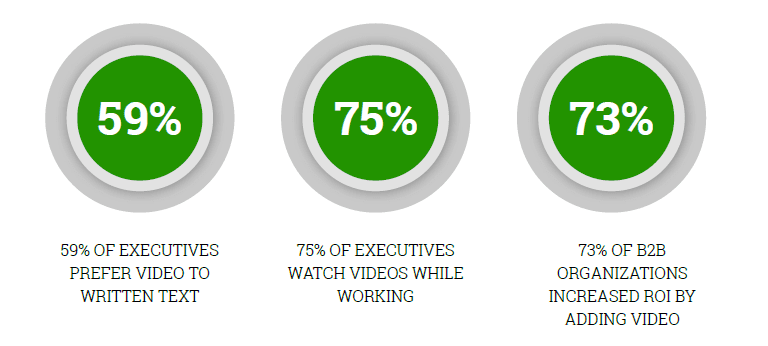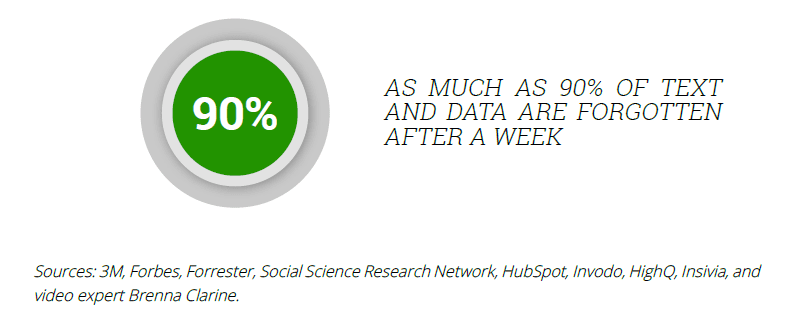This is the first installment of a two-part article about the uses and benefits of video white papers. Part 2 will appear in the next issue, currently scheduled for November 2018.
Are traditional white papers and marketing material effective in a Twitter-Facebook, 7-second attention span world? Are they read? Are they effective in communicating complex concepts in a brief yet compelling way?
Perhaps there is a better way to demonstrate thought leadership and innovation when communicating with customers…a better way to shape and influence major RFPs. A video white paper or video application (vapp) is a creative process that better illustrates the mission value of your ideas. And the uses are limitless; however, it is a mistake to use them for just marketing and sales.
“I have a giant warehouse, just like the one in Raiders of the Lost Ark that stored the Ark of the Covenant, full of software and technologies that failed to live up to promises.” MARK LOWENTHAL, former Assistant Director of Central Intelligence (ADCI)
Government customers are very skeptical of shiny objects offered by contractors. After 40 years of promises, they are still burdened with legacy technologies, cost overruns, and failed programs. Video selling without understanding devastates credibility and labels you as another beltway bandit. Conversely, video white papers or vapps can be used to show thought leadership and deep understanding of mission challenges. The most innovative companies are moving beyond platitudes and using videos instead to dissect technical challenges and illustrate mission solutions with visual stories that demonstrate mastery, equating to credibility and trust.
What is a video white paper?
Video white papers are videos—minidocumentaries, investigative stories, tutorials, technical demonstrations, mission scenarios—produced to influence and shape customer thinking by transforming complex subjects (Agile, Blockchain, Cloud, Cyber, ITSM) into interesting, informative, and engaging communications. Each video white paper may use a variety of different styles depending upon your firm’s need, customer preference, and method of distribution.

For example, a style may mirror an investigative story led by an anchor or host that includes anchor commentary, interviews, and footage pertaining to the topic. Or a minidocumentary style may be chosen using a narrator, interviews, footage, and reenactments when appropriate. There is no limit to the styles that can be used. For instance, a video white paper for a major acquisition regarding securing international installations may include acted mission scenarios to better illustrate a mission problem accompanied by interviews and segments specifically designed to demonstrate how your firm solves management and technical challenges step by step.
Video length can vary depending upon the goal of the video communication. For instance, an investigative piece on overcoming challenges associated with migrating to the Amazon Cloud may be 4 to 6 minutes, if it is intended to target known contacts within a customer’s organization. Conversely, a series of cyber awareness minidocumentaries posted on LinkedIn and Twitter may only be 1 minute, as analytics suggest that social media video viewership dramatically drops after 40 seconds.
Why are video white papers more effective?
[intense_blockquote width=”33%” rightalign=”1″]1. Video is faster: Busy Government executives and operators can absorb your firm’s ideas.[/intense_blockquote]According to research complied by 3M, visuals are processed 60,000 times faster than text, which means you can paint mental pictures rapidly. Visual content condenses and converts complicated subjects into absorbing content. Additionally, as reported in the Advanced Web Ranking blog in their article “11 Reasons Why Video is Better Than Any Other Medium”, visuals combined with audio boost mental processing and condense processing time even further. For example, a graph could be presented with a speaker simultaneously expounding on the information therein, instead of a graph followed by a paragraph explaining it. Content rich videos are more fulfilling than viewing simple images or text; therefore, it is not surprising that…
 [intense_blockquote width=”33%” rightalign=”1″]2. Video conveys more, more accurately: Customer understanding increases as technical nuances and operational subtleties can be clearly communicated.[/intense_blockquote]Body language and verbal tone also play a critical role in conveying a message. Text content relies on precise word choice, punctuation, and visual features like emoticons to establish the right tone. However, with video, viewers can determine exactly what the speaker is trying to get across by observing body language, verbal tone, and other visual cues. Video can also simultaneously include all forms of visual and auditory content. A video can consist of a podcast and an article all in one and include limitless images, infographics, and text. No other medium has this ability. (https://www.advancedwebranking.com/blog/11-reasons-why-video-is-better/)
[intense_blockquote width=”33%” rightalign=”1″]2. Video conveys more, more accurately: Customer understanding increases as technical nuances and operational subtleties can be clearly communicated.[/intense_blockquote]Body language and verbal tone also play a critical role in conveying a message. Text content relies on precise word choice, punctuation, and visual features like emoticons to establish the right tone. However, with video, viewers can determine exactly what the speaker is trying to get across by observing body language, verbal tone, and other visual cues. Video can also simultaneously include all forms of visual and auditory content. A video can consist of a podcast and an article all in one and include limitless images, infographics, and text. No other medium has this ability. (https://www.advancedwebranking.com/blog/11-reasons-why-video-is-better/)
Our brains are hardwired to absorb and retain visual stories. Research suggests that as much as 90% of text and data are forgotten after a week, whereas nearly all information contained in a compelling video story may be remembered. This is because stories engage more areas of the cerebral cortex (emotion/right brain) increasing retention as the viewer begins to personally relate to the story. This phenomenon partially explains why people enjoy watching movies as well. [intense_blockquote width=”33%” rightalign=”1″]3. Video sticks with viewers: Acquisition officials and RFP writers will remember your message.[/intense_blockquote]
Video white papers provide a tremendous competitive advantage. Your competitors are not using video white papers and if they do, the messaging and production is often limited (see Challenge section below). Video white papers present an opportunity to demonstrate thought leadership, differentiate your firm, and win major opportunities.

Check out the following video for more information regarding video production:
[intense_video video_type=”youtube” video_url=”https://www.youtube.com/watch?v=CXd-gL9IL9I”]
In the upcoming installment of this article in the next issue of the APMP-NCA eZine, we will discuss how and when to use video white papers, some of the challenges and pitfalls of using this innovative technique, and how to help differentiate yourself from the crowd.




Leave A Comment